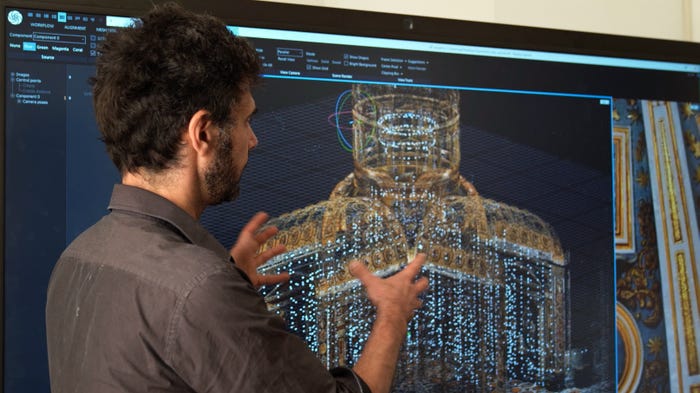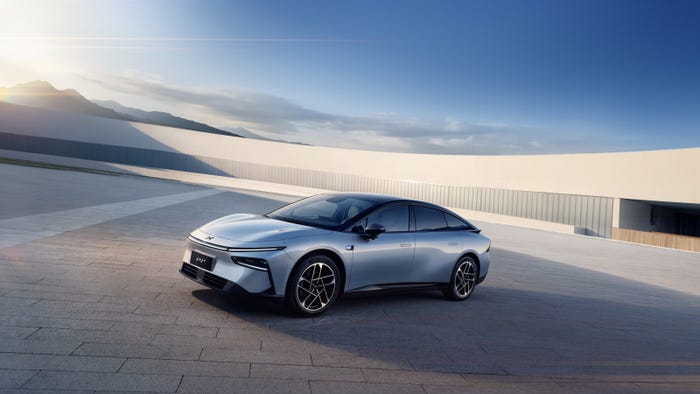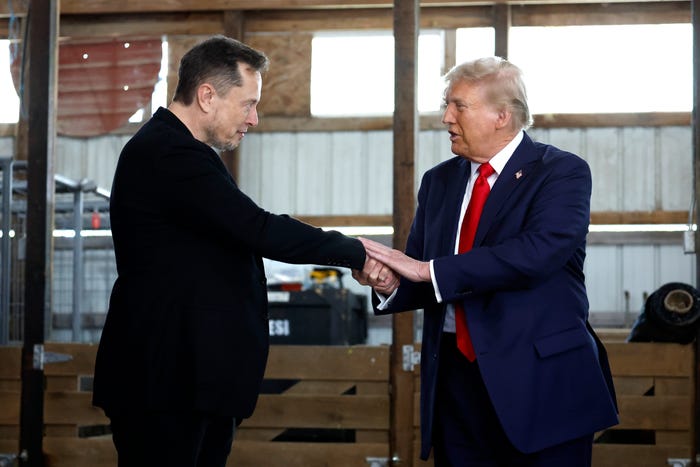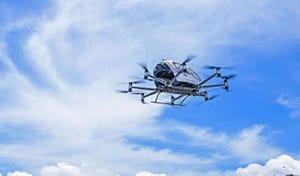Schneider Electric Exec on the Fourth Industrial Revolution
The Fourth Industrial Revolution isn’t just a theory, said a Schneider Electric exec. In this Q&A, he explains who is positioned to lead the transformation.
October 25, 2019

Talking to Schneider Electric’s Chief Innovation Officer Emmanuel Lagarrigue can feel a bit like talking to a historian of the near future. Lagarrigue can not only pontificate on trends poised to reshape much of the economy in the next few years, and beyond, but also readily switches the frame of reference among the past, present and the future.
In the following Q&A, Lagarrigue shares his thoughts on why AI, in some cases, will displace IoT-based sensors, the prospect of radically reinventing the world’s electrical infrastructure, why sustainability makes financial sense and how Schneider is responding to the increasingly fragmented international economy.
The responses have been edited for brevity.
What is Schneider Electric’s perspective on the notion that the broader economy is undergoing dramatic change — a Fourth Industrial Revolution? And how does Schneider navigate that inflection point?
Lagarrigue: It is an inflection point. I agree with you.
At Schneider Electric we do basically two things: power management and automation for commercial buildings, residential buildings, industrial customers and infrastructures.
In the world of automation, things are happening or have happened very fast.
What we see today with IoT is not completely new. We’ve been automating plants and buildings for a long time. It’s just been put on steroids over the past five, six years — changing a lot of the business models we have right now.
So this is why for a company like us, the focus is going to be much more on software and analytics and probably less on controllers and sensors. We have many sensors, but they have many applications where today, you can simply replace a sensor with an AI engine. You just grab data from other places, and you get the same level of precision as what you would have had [with sensors] but without actually measuring stuff.
Can you provide an example of how AI algorithms are replacing the need for connected sensors?
Lagarrigue: We see that a lot, for instance, in the automation of air quality. How you control the HVAC of a building depends on the air quality outside of the building.
So the main question for a facilities manager here is: Can I let air in from outside into the HVAC system or not?
Lagarrigue: Yes. The classical way to do that would be to put a lot of pollution sensors around the city and say, ‘hey, [an influx of air pollution] is coming.’ Now you don’t need that.
You can have very few sensors or even use existing weather stations. Then, you capture that information and with AI, you can model what is going to happen depending on the winds and with a lot of precision.
And you see that general principle of software reducing the need for sensors applying to other areas?
Lagarrigue: Yes. You see this a lot in industrial automation. This has happened already. It’s happening really fast, and there’s still a lot that’s going to happen. So, we are in the middle of that digitization of everything, especially in that world automation.
Decarbonization is a prominent theme for Schneider Electric. Can you share your perspective on this subject and how it relates to the Fourth Industrial Revolution?
Lagarrigue: We will see a revolution of decentralized energy resources. A new to produce and consume electricity will really ramp up in the next decade. It’s probably a transformation similar to the one we have seen in IT and communications in the past 30 years. So it’s going to be massive and transformational for many, many companies in the space of energy.
One of the big outcomes of this is not only better access to energy for everyone. This includes places where energy is starting to falter like in California, or in areas where you don’t have power such as Subsaharan Africa or in rural India. But you can provide electricity more sustainably than today. Let’s not forget that even with the huge growth that we see in renewables, still 70% of the electricity on the planet is produced out of fossil fuels.
The good thing here is that the financial community is waking up and is investing in a company with strong environmental, social and corporate governance goals. A company that has a positive impact on its environment commands a premium now.
You see other players in the oil and gas sector who understand this revolution is coming and want to be part of it. Some more progressive utilities have understood what’s going to happen. They are now starting to change their business model.
Companies like Schneider Electric see our customers coming to us and asking for more sustainable solutions.
What do you think the competitive landscape will look like in the energy sector in the future?
Lagarrigue: I look at it like the transformation of IT and communications. A lot of companies were in those markets 30 years ago that are still around today. They just have a different role. Microsoft was there, as was AT&T, for instance. There also will be new market entrants. In IT, Google was not there 30 years ago. Amazon Web Services was not there. And now they are.
You will probably see, 10 to 15 years from now, new entrants to the energy sector and some of the same names as you see today. But the incumbents will have different roles.
Many companies these days have sustainability initiatives. Schneider was early to do so.
Can you talk about that?
We indeed began to be vocal about sustainability a long time ago — 13 years ago, to be precise. We wanted to put the right metrics in place, incentivize our leaders on sustainability metrics. Greenwashing is not an option. We wanted to be consistent with sustainability, which we think should be the end game for any company in any industry.
Plus, Schneider Electric is also selling sustainability as a value proposition to our customers. They come to us asking: “Can you help me become more sustainable?” How do you create the new energy landscape and how the way you generate, transport, use, consume, upload, download energy, share it, it’s just a lot of software that is going to be required. You could think the utilities that are going to make it in that transformation will be the utilities, which would have understood that their new function is about software. Their new job is about software.
There has been a reaction against globalization in several parts of the world. Being that Schneider Electric is an international company, how has that affected your business?
Lagarrigue: It’s true that the notion of globalization is today very different from what we could see 10 years ago. The world is getting a bit more fragmented. And this trend has an impact on how technologies are being developed and used.
China is arguably the most electric economy in the world. Even though the U.S. uses much more energy than China today, in terms of electricity, China is twice as big as the U.S. Half of the electric vehicles in the world are on Chinese roads. A total of 90% of electric buses are in China and 70% of renewables are being produced in China. In addition, 70% of the production capacity is in China.
China’s electrification has happened quickly, right?
Lagarrigue: It’s happened quickly because it’s been a general strategic goal of the Chinese government. Plus, we’re talking about an economy that is growing fast and is getting richer progressively.
You will probably have new technologies being created in China, and Chinese manufacturers will either not be interested in exporting to the West because the domestic market will be big enough for them, or they will struggle to export those technologies.
We see companies like Schneider who understand the two worlds and the fragmentation as playing a role —respecting the cultures and the values of those countries where the demand will be.
For instance, we have a fleet electrification software practice that we are launching. We have opted to start one venture in the U.S. and one in China — completely separate. Now you look at them, they’re very similar. But they are completely separate ventures. They don’t talk to each other. There is no link between them, although they are basically doing the same thing. In some cases, though, what will happen is you will launch two product tracks, two businesses, and there will be more globalization or synergies between them.
About the Author
You May Also Like





.jpg?width=300&auto=webp&quality=80&disable=upscale)
